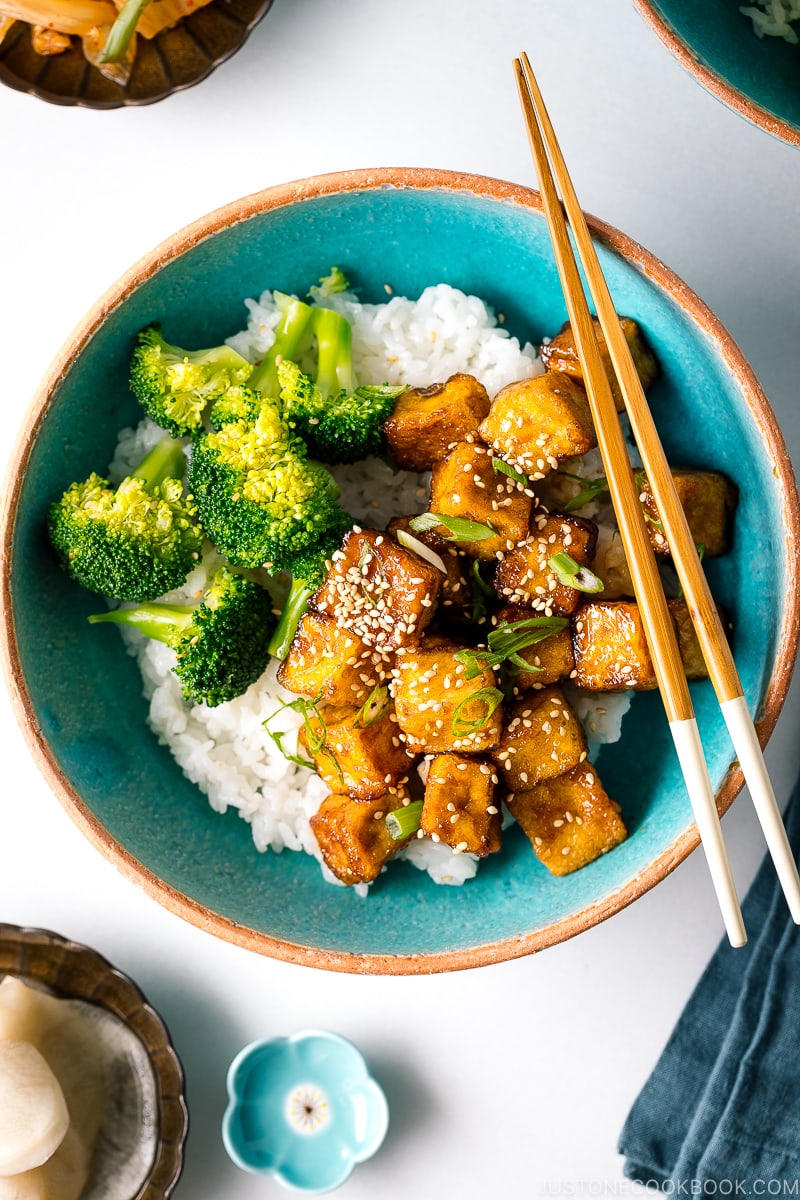
Smothered with sweet-savory homemade teriyaki sauce, this Pan-Fried Teriyaki Tofu Bowl is amazingly easy and delicious! It’s also a great way to incorporate tofu into your weeknight dinner rotation. Bonus: I’ll show you the best way to cook crispy tofu.

Tofu is a magical substance in the Japanese food world. This collection of Japanese tofu recipes is yummy proof!
Today’s Teriyaki Tofu Bowl (照り焼き豆腐丼) is a super-simple yet satisfying recipe. Crispy pan-fried tofu glazed in the beloved teriyaki sauce and served over fluffy rice with veggie. It has to be one of the dynamic one-bowl meals for vegetarians, vegans, and omnivores alike.
In addition to being simple and easy, it’s also:
This Teriyaki Tofu Bowl consists of 3 simple components:
If you have some frozen cooked rice from the freezer, you just need to microwave it while pan-frying the tofu. Talk about a meal-prep-friendly, speedy dinner!
I do want to mention that while most people in the US (or anyone who follows food trends) are familiar with teriyaki tofu bowls, the dish is not exactly a thing you can find in Japan.
To be clear, there are endless variations of rice bowls (or what we call the donburi) in Japanese cuisine, but we don’t typically serve cubed tofu over steamed rice in such a manner.
Instead, we serve thick slices of tofu as “tofu steak” such as my Teriyaki Tofu recipe as a standalone side to complement a well-rounded ichiju sansai Japanese meal.
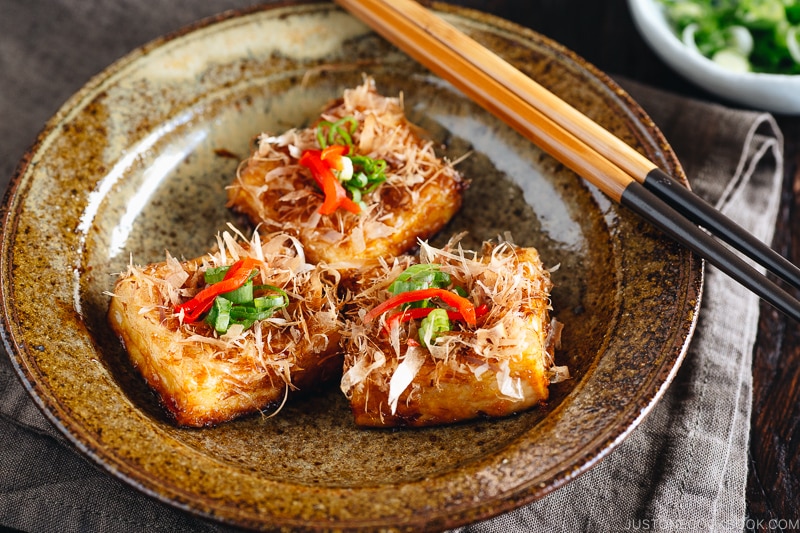
Anyhow, I can see why teriyaki tofu is being incorporated into a rice bowl format! By serving bite-sized crispy tofu over a bowl of rice and veggies, it makes a quick weekday meal that comes together in a flash. For these reasons, I’m on board!
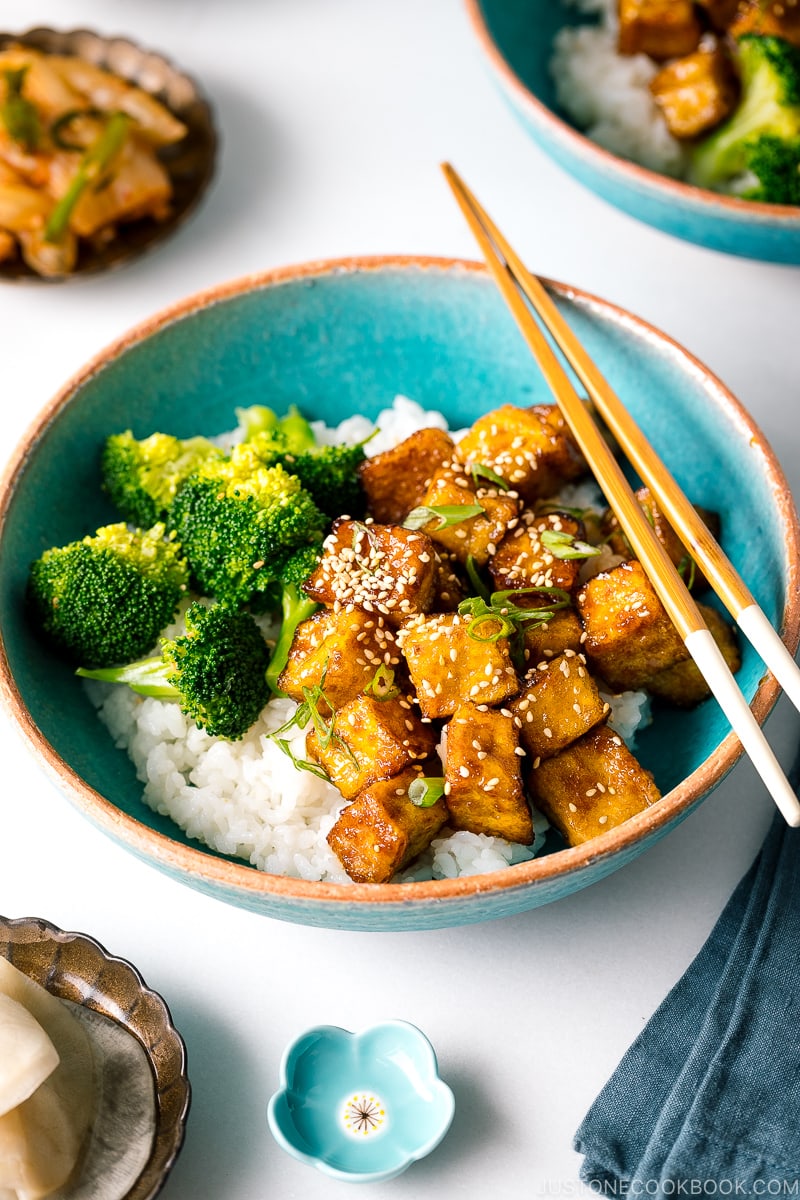
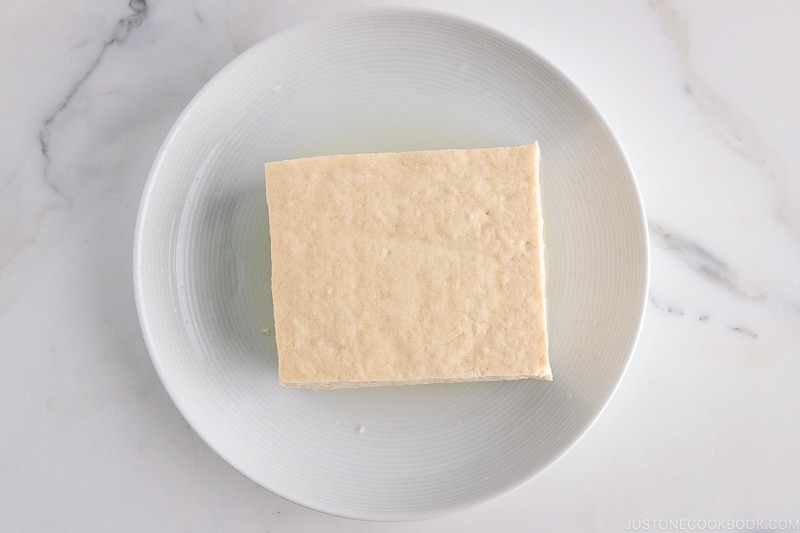
There are a few reasons why it’s important to drain the tofu before using it.
📝 Good to know: You can even control the texture and flavor of tofu by changing the draining time according to the dish.
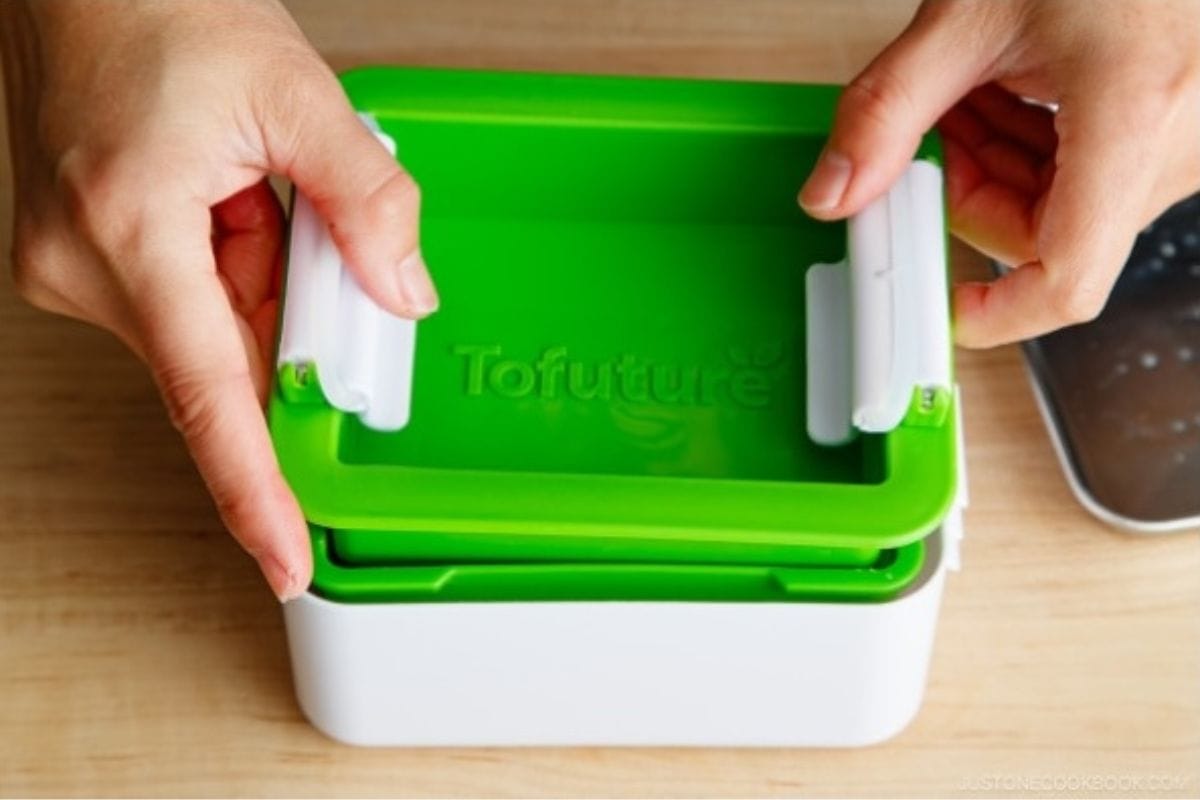
As you know, you can press tofu with a heavy object like a pot filled with water. However, I wanted to speed up the pressing time and make it more compact when doing this process, so I tried Tofuture Tofu Press and I wish I had gotten it sooner. It’s one of the best tofu presses because it’s easy to use and doesn’t take up much space.
Now, I don’t have to risk a heavy object falling while pressing my tofu and it takes up much less of my prep space. It drains tofu quickly, and you’ll only have to press it for about 30 minutes to make Teriyaki Tofu. If you have been debating getting a tofu press, don’t wait—just get this one on Amazon for $22!
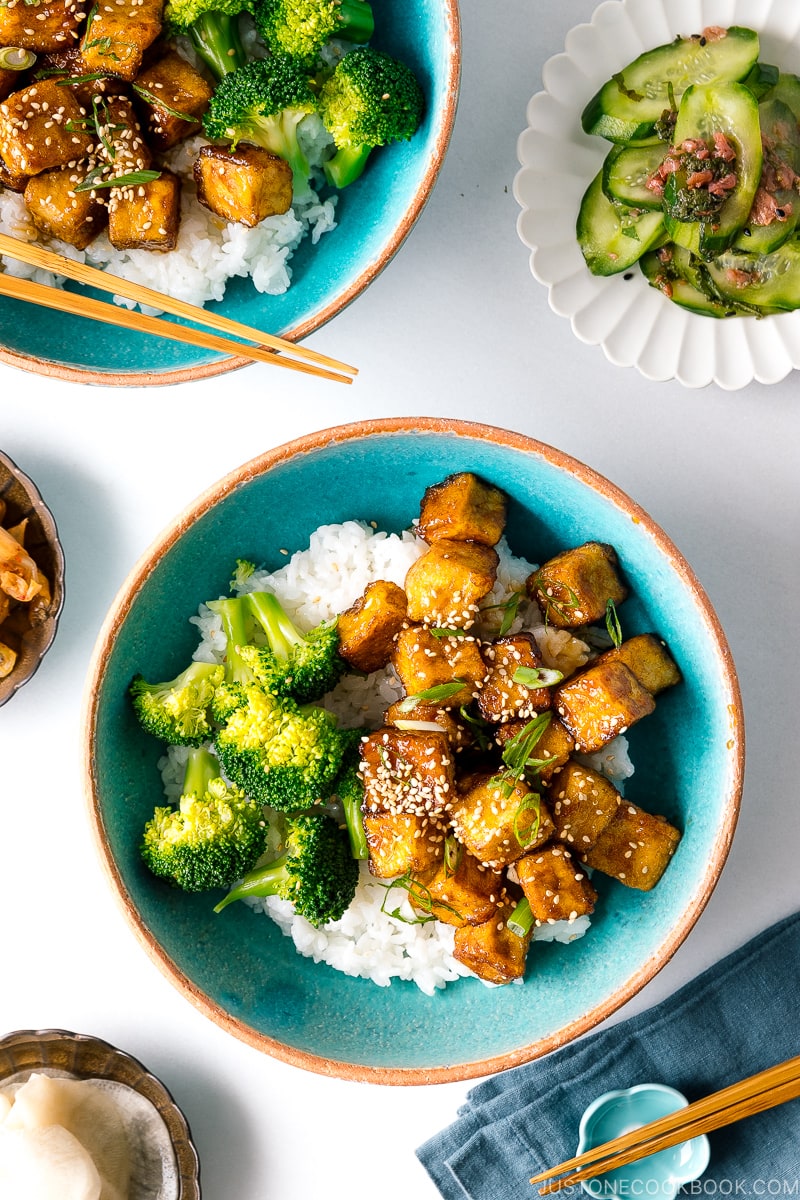
I’ve used different types of tofu for pan-fried recipes, and I find medium-firm tofu (momen dofu 木綿豆腐) offers the best texture.
Why? Medium-firm tofu is firm enough that it won’t crumble easily yet it keeps enough moisture that it stays tender and fluffy after pan-frying. I usually let it drain for 30-45 minutes, but you can extend it if you like your tofu to be on the firmer side.
Many people use extra-firm tofu when it comes to pan-frying or baking, but I feel the texture of the tofu is too tough and dry.
This is my personal preference, so feel free to use firmer tofu if preferred.
If you leave the tofu on the countertop, water naturally starts to come out from the tofu. When you apply pressure on the tofu, it drains the water out faster, resulting in a firmer texture.

You can purchase a tofu press if you eat pan-fried or stir-fried tofu often. It’s a convenient and effective way to drain as much water as possible. However, if you don’t plan to use it often, you can always use an old fashion way of putting a heavy object on top of the tofu.
Wrap the tofu around with paper towels so that excess moisture will be absorbed. Then place a flat board such as a cutting board, tray, or plate, which helps distribute the weight.
Your weight should be heavy enough to press down evenly across the top of the tofu, but not so heavy that the tofu would crumble. I use a marble mortar but a large can of food is a perfect weight.
In Japan, potato starch, or what we call katakuriko (片栗粉), is the most common starch we use to coat ingredients for pan-frying or deep-frying. The potato starch creates a nice crispy shell around the food, absorbs all the delicious flavors from the sauce, and thickens it at the same time.
The closest substitute and the popular counterpart is cornstarch. It looks similar, but when you touch it, you could immediately tell these two starches apart.
When I did recipe testing for Karaage (Japanese fried chicken) using these two starches, I realized potato starch coating is significantly better than cornstarch for yielding the best crispy texture; therefore, I highly recommend potato starch for this recipe as well.
I do not have experience in using other types of starch, so I can’t advise on other substitutes.
Since uncooked tofu is edible right out of the package, you can speed up the browning process by cooking on relatively higher heat.
Why browning? It gives an additional layer of delicious charred flavor, makes the food more appealing, and creates a crispy shell.
Don’t flip the cubed tofu frequently; give enough time for each side of the tofu to have good contact with the hot frying pan so it will brown properly.
The potato starch coating on the tofu will absorb and thicken the delicious sauce quickly. Once you see the sauce thickens, remove the pan from the stove. The sauce will continue to thicken as more moisture evaporates.
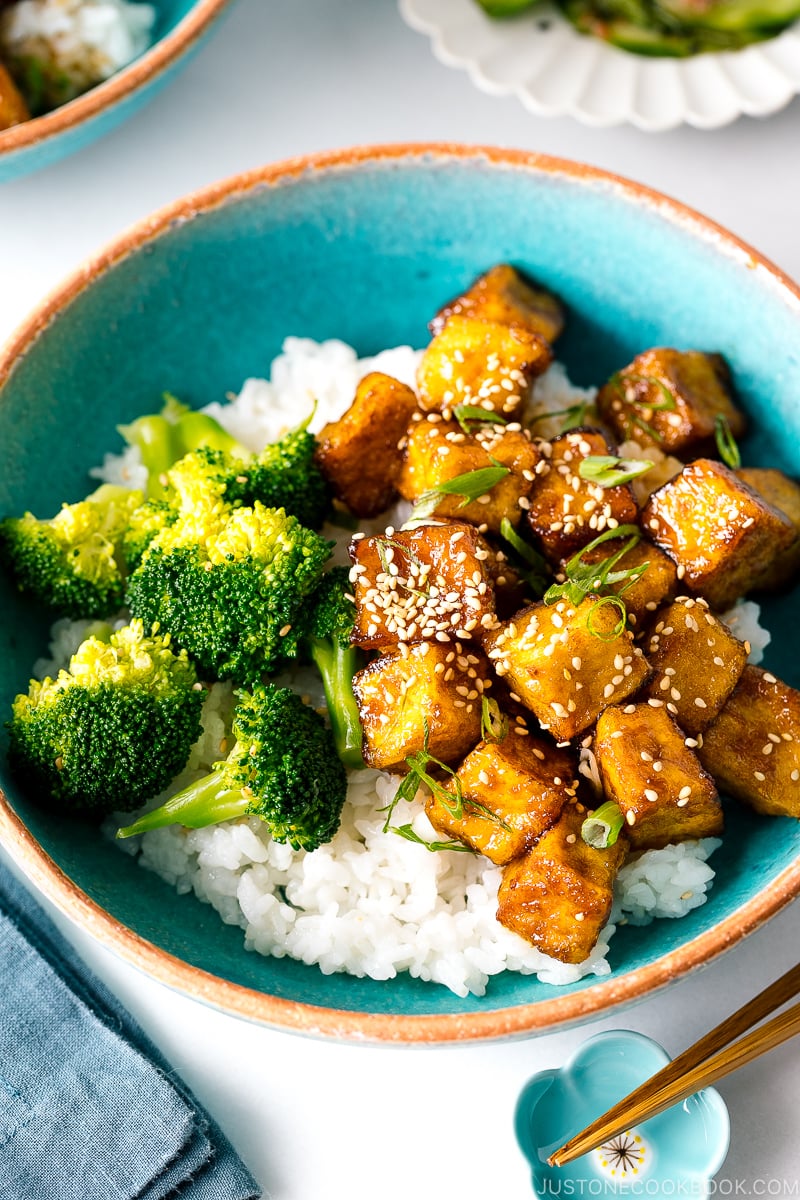
You can serve the Teriyaki Tofu Bowl as it is but for a more elaborate meal, here are my suggestions:
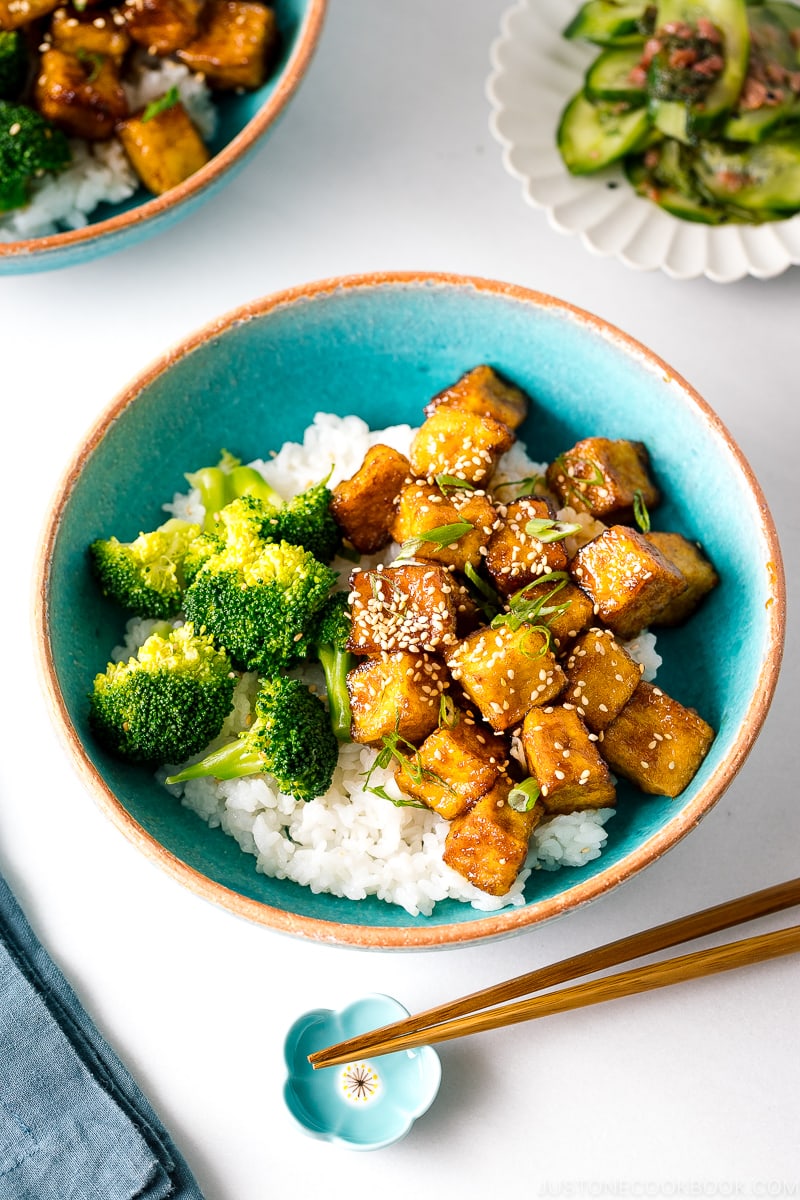
I’ve partnered with a great ceramic online shop from Japan called Musubi Kiln. You will get 10% off with a coupon code JUSTONECOOKBOOK for your purchase. In this post, I’ve used:
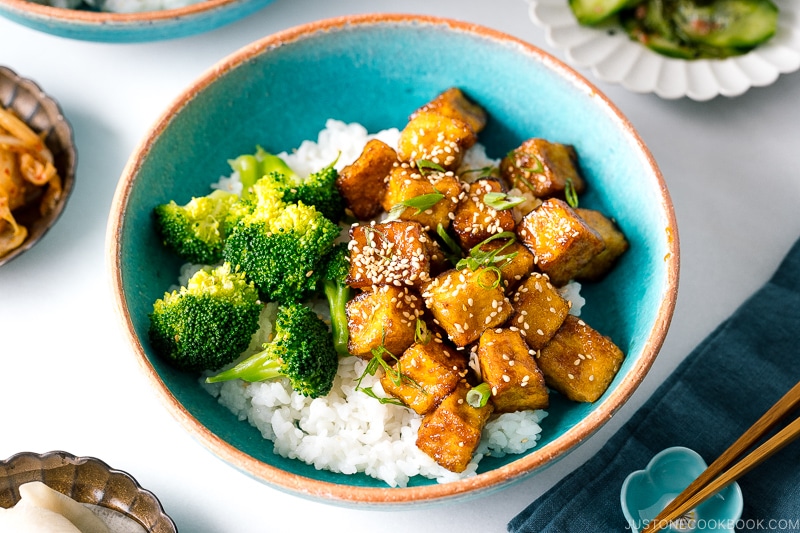
Wish to learn more about Japanese cooking? Sign up for our free newsletter to receive cooking tips & recipe updates! And stay in touch with me on Facebook, Pinterest, YouTube, and Instagram.
